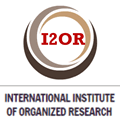Caracterización analítica e histológica del hígado graso no alcohólico en pacientes diabéticos tipo II
Resumen
Palabras clave
Referencias
Callen L, Moreno E, Barroso-Chinea P, Moreno-Delgado D, Cortés A, Mallol J, et al. Cannabinoid receptors CB1 and CB2 form functional heteromers in brain. J Biol Chem [Internet]. 2012 [citado 10 Feb 2016];77(3):287(25):20851-65. Disponible en: http://www.ncbi.nlm.nih.gov/pubmed/22532560
Valenzuela C, Castillo V, Ronco AM, Aguirre C, Hirsch S, Llanos M. Sistema endocanabinoide y esteatosis hepática. Rev Méd Chile [Internet]. 2014 [citado 10 Feb 2016];142(3):353-360. Disponible en: http://www.scielo.cl/scielo.php?script=sci_arttext&pid=S0034-98872014000300010
Mallat A, Teixeira-Clerc F, Deveaux V, Manin S, Lotersztajn S. The endocannabinoid system as a key mediator during liver diseases: new insights and therapeutic openings. Br J Pharmacol [Internet]. 2011 [citado 10 Feb 2016];163(7):1432-40. Disponible en: http://www.ncbi.nlm.nih.gov/pubmed/21457226
Louvet A, Texeira-Clerc F, Chobert MN, Deveaux V, Pavoine C, Zimmer A, et al. Cannabinoid CB2 receptors protects against alcoholic liver disease by regulating Kupffer cell polarization in mice. Hepatology [Internet]. 2011 [citado 10 Feb 2016];54(4):1217-26. Disponible en: http://www.ncbi.nlm.nih.gov/pubmed/21735467
Yilmaz Y. NAFLD in the absence of metabolic syndrome: different epidemiology, pathogenetic mechanisms, risk factors for disease progression? Semin Liver Dis [Internet]. 2012 [citado 10 Feb 2016];32(1):14-21. Disponible en: http://www.ncbi.nlm.nih.gov/pubmed/22418884
Tailleux A, Wouters K, Staels B. Roles of PPARs in NAFLD: potential therapeutic targets. Biochim Biophys Acta [Internet]. 2012 [citado 10 Feb 2016];1821(5):809-18. Disponible en: http://www.ncbi.nlm.nih.gov/pubmed/22056763
Musso G, Cassader M, Rosina F, Gambino R. Impact of current treatments on liver disease, glucose metabolism and cardiovascular risk in non-alcoholic fatty liver disease (NAFLD): a systematic review and meta-analysis of randomised trials. Diabetologia [Internet]. 2012 [citado 10 Feb 2016];55(4):885-904. Disponible en: http://www.ncbi.nlm.nih.gov/pubmed/22278337
Mazza A, Fruci B, Garinis GA, Giuliano S, Malaguarnera R, Belfiore A. The role of metformin in the management of NAFLD. J Diabetes Res [Internet]. 2012 [citado 10 Feb 2016];2012 ID 716404:[aprox. 13 p.]. Disponible en: http://www.hindawi.com/journals/jdr/2012/716404/
Liechti F, Dufour JF. Treatment of NASH with ursodeoxycholic acid: cons. Clin Res Hepatol Gastroenterol [Internet]. 2012 [citado 10 Feb 2016];36 Suppl 1:S46-52. Disponible en: http://www.ncbi.nlm.nih.gov/pubmed/23141894
Liangpunsakul S, Chalasani N. What should we recommend to our patients with NAFLD regarding alcohol use? Am J Gastroenterol [Internet]. 2012 [citado 10 Feb 2016];107(7):976-8. Disponible en: http://www.ncbi.nlm.nih.gov/pubmed/22764020
Kim MS, Kung S, Grewal T, Roufogalis BD. Methodologies for investigating natural medicines for the treatment of nonalcoholic fatty liver disease (NAFLD). Curr Pharm Biotechnol Internet]. 2011 [citado 10 Feb 2016];13(2):278-291.Disponible en: http://www.ncbi.nlm.nih.gov/pubmed/21470125
Di Rosa M, Malaguarnera L. Genetic variants in candidate genes influencing NAFLD progression. J Mol Med (Berl) [Internet]. 2011 [citado 10 Feb 2016];90(2):105-118. Disponible en: http://www.ncbi.nlm.nih.gov/pubmed/21894552
Caporaso N, Morisco F, Camera S, Graziani G, Donnarumma L, Ritieni A. Dietary approach in the prevention and treatment of NAFLD. Front Biosci (Landmark Ed) [Internet]. 2012 [citado 10 Feb 2016];17:2259-68. Disponible en: http://www.ncbi.nlm.nih.gov/pubmed/22652776
Bonora E, Targher G. Increased risk of cardiovascular disease and chronic kidney disease in NAFLD. Nat Rev Gastroenterol Hepatol [Internet]. 2011 [citado 10 Feb 2016];9(7):372-381. Disponible en: http://www.ncbi.nlm.nih.gov/pubmed/22565095
Okanoue T. Recent progress in the research of NASH/ NAFLD in Japan. Nihon Shokakibyo Gakkai Zasshi [Internet]. 2011 [citado 10 Feb 2016];108(7):1161-1169. Disponible en: https://www.jstage.jst.go.jp/article/nisshoshi/108/7/108_7_1161/_pdf
Valenzuela CA, Castillo VA, Aguirre CA, Ronco AM, Llanos MN. The CB1 receptor antagonist SR141716A reverses adult male mice overweight and metabolic alterations induced by early stress. Obesity (Silver Spring) [Internet]. 2011 [citado 10 Feb 2016];19(1):29-35. Disponible en: http://www.ncbi.nlm.nih.gov/pubmed/20559305
Liu J, Zhou L, Xiong K, Godlewski G, Mukhopadhyay B, Tam J, et al. Hepatic cannabinoid receptor-1 mediates diet-induced insulin resistance via inhibition of insulin signaling and clearance in mice. Gastroenterology [Internet]. 2012 [citado 10 Feb 2016];142(5):1218-1228. Disponible en: http://www.ncbi.nlm.nih.gov/pubmed/22307032
Tam J, Cinar R, Liu J, Godlewski G, Wesley D, Jourdan T, et al. Peripheral cannabinoid-1 receptor inverse agonism reduces obesity by reversing leptin resistance. Cell Metab [Internet]. 2012 [citado 10 Feb 2016];16(2):167-79. Disponible en: http://www.ncbi.nlm.nih.gov/pubmed/22841573
Leuschner UF, Lindenthal B, Herrmann G, Arnold JC, Rössle M, Cordes HJ, et al. High-dose ursodeoxycholic acid therapy for nonalcoholic steatohepatitis: a double-blind, randomized, placebo-controlled trial. Hepatology [Internet]. 2010 [citado 10 Feb 2016;52(2):472-9. Disponible en: http://www.ncbi.nlm.nih.gov/pubmed/20683947
Mallat A, Teixeira-Clerc F, Deveaux V, Manin S, Lotersztajn S. The endocannabinoid system as a key mediator during liver diseases: new insights and therapeutic openings. Br J Pharmacol [Internet]. 2011 [citado 10 Feb 2016];163(7):1432-40. Disponible en: http://www.ncbi.nlm.nih.gov/pubmed/21457226
McLarnon A. Liver: potential of resistance exercise as a lipid-lowering treatment for NAFLD that is independent of weight loss. Nat Rev Gastroenterol Hepatol [Internet]. 2011 [citado 10 Feb 2016];8:476. Disponible en: http://www.nature.com/nrgastro/journal/v8/n9/full/nrgastro.2011.137.html
Enlaces refback
- No hay ningún enlace refback.
Copyright (c) 2016 Esther Lidia González González, Victor Manuel López Mejia, Sarah Esther Díaz Oliva, Merlyn Arce Núñez, Yosvany Medina Garrido, Marila Suárez González











 15 de abril de 2024
15 de abril de 2024


